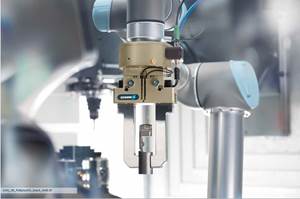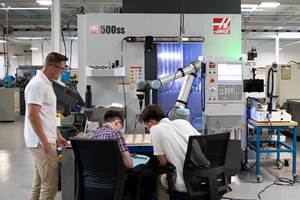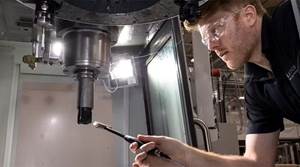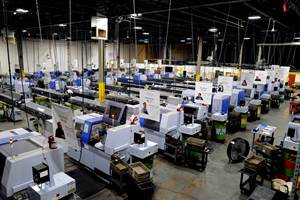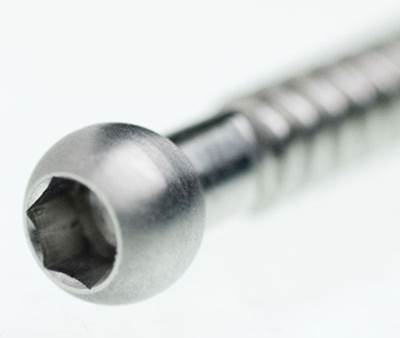Share





Mazak’s midwest general manager, Kevin Bates (center), helps introduce the company’s new line of Syncrex Swiss-style machines at the Mazak Discover 2021 event in October. Photo Credit: Mazak
For a brief period in the early fall of 2021, after the Delta variant of COVID-19 had swept across the Midwest United States, plans for Mazak’s first in-person event in nearly two years looked like they might fall through.
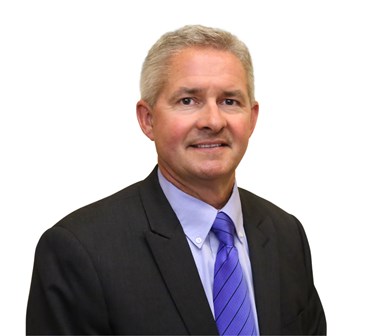
Mazak President Dan Janka. Photo Credit: Mazak
So, it was more than a pleasant surprise when 1,500 attendees showed up to the company’s sprawling campus in northern Kentucky this past October for the week-long technology and education summit. Mazak Discover 2021 was an occasion to celebrate, and not only because the event offered a sense of normalcy after more than a year of virtual-only events and virtually no trade shows. Discover 2021 featured one of the biggest technology debuts that Mazak has offered in several years: a major expansion of its machine tool tech portfolio with a new line of Swiss-style machines called Syncrex (think “synchronized axes”).
Mazak’s new Syncrex Swiss-style machines are available in seven, eight and nine-axis configurations. The company expects to begin taking orders during the first quarter of this year.
The company believes that several features of these machines will set them apart from the pack, including an automated tool setter and a high-rigidity composite base casting designed to reduce vibration and thermal distortion.
It's not every day that a top-tier machine tool OEM announces an entirely new product line. So, we sat down with Mazak president Dan Janka and midwest general manager Kevin Bates to talk about the launch and the opportunity the company sees in Swiss-type lathes.
91ÊÓƵÍøÕ¾ÎÛ (MMS): How did the idea for a Swiss line of Mazak machine tools evolve?
Dan Janka, Mazak president: The topic has been on the table for several years. We have annual strategic planning sessions at our headquarters where we lay out our product development priorities, and, frankly, Swiss-style machines have taken on a heightened sense of priority over the last five years, when we have continued to see increases in the overall share of consumption of Swiss turning vis-à-vis overall turning. We also began to see adoption of high-volume production in some of the more sophisticated job shops, so we took that very seriously and made a commitment to go all-in.
Notable features of Mazak’s new Syncrex line include automatic tool setting inside the machine —said to be a first for sliding-headstock machines — and a high-damping, polymer composite base with lower thermal conductivity than cast iron.
Kevin Bates, midwest general manager: The technologies that are coming with the Swiss-turn as far as quick-change tooling and offline programming are really driving its adoption. Years ago, running Swiss [machines] usually involved doing your setups on a Monday and running parts through Friday. Now we have customers and job shops that are changing setups daily or multiple times a day. Swiss machines have become more of a common job-shop type machine and are really breaking apart from high run production. Many of our customers have come to us looking to take advantage of this technology to achieve shorter cycle times. Plus, Swiss style turning is a better solution for many parts because of its versatility and ability to handle parts with long length-to-diameter ratios.
MMS: And these machines are being produced in northern Kentucky?
Dan Janka: We have secured a facility which will extend our existing campus here, yes. The facility is constructed with high bays and already has sufficient crane capacity. It’s undergoing some upgrades as we speak. So most of the machining and unit assembly will be done in our main facility, but the final assembly will be done in the new facility.
Kevin Bates: We want the Syncrex to have its own identity within the company, and for us that means using dedicated assembly technicians. And then, rather than having to ship those to a different location for runoff or to interface with a bar feed, we're going to do it right here.
MMS: Is Mazak already taking Syncrex orders from customers? Or what is the timeline?
Kevin Bates: We're not taking orders quite yet, but our target is to be quoting and taking orders during the first quarter of 2022.
Dan Janka: So [at the Discover event] you got to witness six different models that have been through all the prototype tests. And there are six additional models that are in either final assembly or prototypes. So when we launch, there will be the full complement of 20-millimeter up through 38-millimeter sized machines.
MMS: One of the interesting stats that came out of the 2021 Discover event was that 20% of the attendees said that they do not own any Mazak machines. And this makes me wonder, is the type of customer that might be interested in adopting Swiss-style machining changing compared to years past?
Dan Janka: There are thousands of job shops that are already Mazak users. And many of those job shops started simple and have since migrated into our done-in-one philosophy that is part of the Integrex product family. And that’s related to the fact that we are seeing more and more small, higher-volume applications with the growth and scalability of the electrification of the automotive industry. You know, small electric motors are becoming more and more prevalent and applied, and that means a lot of small parts. And so when we look to the future, we think that lot of that work will filter down into the job shops. And so we certainly see that as a nice growth driver for us, and we're already there.
Related Content
Lean Approach to Automated Machine Tending Delivers Quicker Paths to Success
Almost any shop can automate at least some of its production, even in low-volume, high-mix applications. The key to getting started is finding the simplest solutions that fit your requirements. It helps to work with an automation partner that understands your needs.
Read MoreCNC Machine Shop Honored for Automation, Machine Monitoring
From cobots to machine monitoring, this Top Shop honoree shows that machining technology is about more than the machine tool.
Read MoreHow to Mitigate Chatter to Boost Machining Rates
There are usually better solutions to chatter than just reducing the feed rate. Through vibration analysis, the chatter problem can be solved, enabling much higher metal removal rates, better quality and longer tool life.
Read MoreInside the Premium Machine Shop Making Fasteners
AMPG can’t help but take risks — its management doesn’t know how to run machines. But these risks have enabled it to become a runaway success in its market.
Read MoreRead Next
Shop's Success Turns on Swiss-type Technology
During the past few decades, the Swiss-type lathe has evolved from a niche product to a go-to platform for done-in-one production of small precision parts. This shop has evolved right along with it.
Read MoreMachine Shop MBA
Making Chips and 91ÊÓƵÍøÕ¾ÎÛ are teaming up for a new podcast series called Machine Shop MBA—designed to help manufacturers measure their success against the industry’s best. Through the lens of the Top Shops benchmarking program, the series explores the KPIs that set high-performing shops apart, from machine utilization and first-pass yield to employee engagement and revenue per employee.
Read More


















